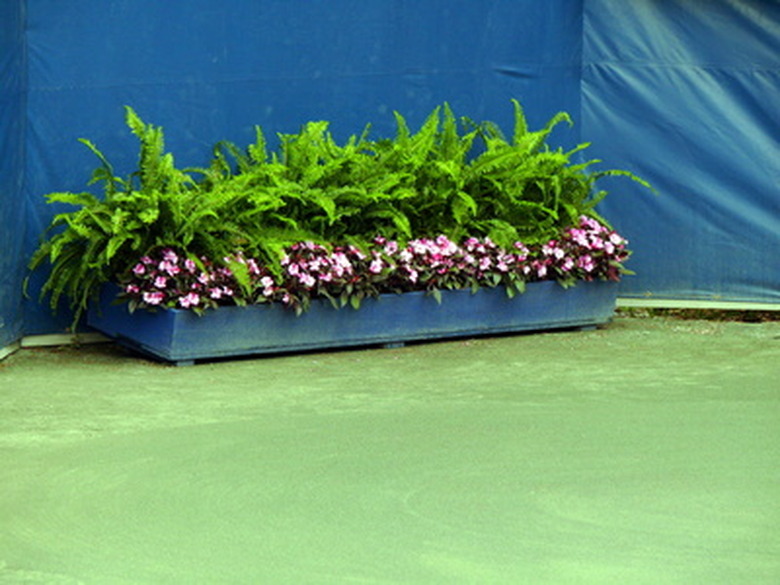Parts Of A Boston Fern
Boston fern (Nephrolepis exaltata 'Bostonensis') bears gracefully arching leaves called fronds. Resilient to some drought, the fronds will turn yellow and brown at the tips if soil becomes too dry for an extended period or if light intensity is too strong. Frosts also kill the fronds; grow it as a woodland fern ground cover only in more tropical areas.
Roots
Roots
Short, erect rhizomes form the primary underground structure for the Boston fern. The rhizome, a fleshy stem, grows shallowly near the soil surface with many fibrous roots growing off it more deeply into the surrounding moist, humusy earth. Narrow surface stems, called runners, emanate outward from the rhizome and will take root on the soil surface. Runners that grow into the soil often develop tubers.
- Boston fern (Nephrolepis exaltata 'Bostonensis') bears gracefully arching leaves called fronds.
- Narrow surface stems, called runners, emanate outward from the rhizome and will take root on the soil surface.
Fronds
Fronds
The frond leaf of the Boston fern looks like a jagged sword overall. Emerging from the rhizome, a new frond unrolls as it lengthens and is called a fiddlehead or crozier. The frond stem is called the stipe and when surrounded by leaflets it is called the rachis. Unfolding off the stipe as it unrolls are many small finger-shaped leaflets called pinnae, singlar pinna. When mature, a Boston fern's frond is about 18 inches in length, sometimes more, and comprises up to 70 pairs of pinnae. A closer look at the arrangement of the pinnae shows they are not perfectly opposite each other on the stipe, but alternating. The frond at first is upright, but as it lengthens it arches gracefully.
- The frond leaf of the Boston fern looks like a jagged sword overall.
- When mature, a Boston fern's frond is about 18 inches in length, sometimes more, and comprises up to 70 pairs of pinnae.
Reproductive Structures
Reproductive Structures
Since the Boston fern does not flower, special reproductive parts and features develop during the spring and summer months. On the backside of some fronds tiny brown circles develop covered by the indusium. Each circle is called a sorus, plural sori. These release grainy powder-like spores. When the spores reach moist soil, they become a tiny heart-shaped "leaf" called a prothallus where fertilization occurs. At the notched end of the prothallus, a thiny little fern develops complete with roots, stems and leaf, and then matures developing more fronds and roots.
